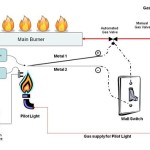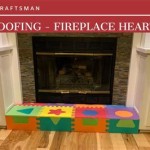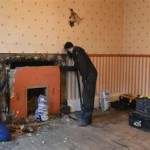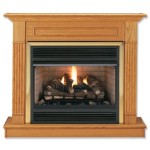How To Make Fireplace Mantel Ideas Come to Life
The fireplace mantel serves as a focal point in many living spaces, providing an opportunity to showcase personal style and enhance the overall aesthetic of the room. Creating a custom fireplace mantel can be a rewarding project that allows for complete control over the design, materials, and functionality. This article presents various fireplace mantel ideas and offers guidance on bringing those ideas to fruition.
Planning and Preparation
Before embarking on the construction of a fireplace mantel, careful planning and preparation are crucial. This phase involves assessing the existing fireplace structure, determining the desired style and dimensions of the mantel, selecting appropriate materials, and ensuring compliance with safety regulations.
The first step involves examining the existing fireplace. Note the dimensions of the firebox opening, the surrounding wall space, and any existing architectural features that might influence the mantel design. Consider whether the mantel will be a simple shelf, a more elaborate surround, or a combination of both. The style of the mantel should complement the overall decor of the room; consider options ranging from rustic and traditional to modern and minimalist.
Once the desired style and dimensions are determined, it is necessary to measure the space accurately. Precise measurements will ensure that the finished mantel fits properly and integrates seamlessly with the existing fireplace. Pay attention to the height of the firebox opening, the width of the chimney breast, and the depth of the mantel shelf. It is advisable to create a detailed sketch or blueprint of the mantel design, including all dimensions, angles, and joinery details. This will serve as a visual guide throughout the construction process.
Material selection is also critical. The choice of materials will influence the appearance, durability, and cost of the mantel. Common materials include wood, stone, brick, and metal. Wood is a versatile option that can be easily shaped and stained or painted to match the surrounding decor. Stone and brick offer a more rustic and substantial look, while metal provides a sleek and modern aesthetic. Consider the fire rating of the chosen material, especially for mantels located close to the firebox opening. Non-combustible materials are highly recommended for safety reasons. Check local building codes for specific requirements regarding fireplace mantel construction and fire safety.
The tools and equipment required will depend on the complexity of the mantel design and the chosen materials. Basic woodworking tools such as a saw, drill, sander, and measuring tape are essential. For stone or brick mantels, specialized tools such as a masonry saw and chisel may be necessary. Safety equipment, including eye protection, ear protection, and a dust mask, should always be worn when working with power tools or materials that generate dust or debris.
Executing Different Mantel Styles
The possibilities for fireplace mantel designs are virtually limitless, ranging from simple and understated to elaborate and ornate. The following are some popular mantel styles and techniques for bringing them to life.
Simple Wood Mantel Shelf: This is a straightforward and cost-effective option that can be customized to fit any space. Begin by selecting a solid wood plank of the desired size and thickness. Hardwoods such as oak, maple, or cherry are durable and aesthetically pleasing. Cut the plank to the required length and sand it smooth. Apply a stain or paint finish to match the surrounding decor. Install brackets to support the mantel shelf, ensuring that they are securely attached to the wall studs. The type of bracket will depend on the weight and depth of the mantel shelf.
Rustic Beam Mantel: For a rustic and cozy look, consider using a reclaimed wood beam as a mantel. Reclaimed beams often have unique character and imperfections that add to their appeal. Clean the beam thoroughly to remove any dirt or debris. Sand the surface to smooth out any rough edges. Apply a sealant to protect the wood from moisture and prevent further deterioration. Install the beam using heavy-duty brackets or metal straps. Ensure that the beam is level and securely attached to the wall.
Traditional Mantel Surround: A traditional mantel surround typically consists of a mantel shelf, pilasters, and a decorative header. This style adds architectural interest and can be customized with various moldings and carvings. Construct the mantel frame using wood or medium-density fiberboard (MDF). Assemble the frame using wood glue and screws. Attach the pilasters to the sides of the frame, ensuring that they are aligned and securely fastened. Add decorative moldings to the header and pilasters to create a custom look. Paint or stain the entire surround to match the surrounding decor. Install the mantel surround around the fireplace opening, ensuring that it is level and plumb.
Modern Floating Mantel: A floating mantel creates a minimalist and contemporary look. This style typically consists of a simple shelf that appears to float on the wall without visible supports. Construct a hollow box using plywood or MDF. The box should be large enough to accommodate the desired mantel shelf. Attach a cleat to the back of the box, ensuring that it is securely fastened. Mount the cleat to the wall studs, ensuring that it is level and plumb. Slide the mantel shelf onto the cleat, creating the illusion of a floating shelf. Conceal the seams with wood filler and sand smooth. Paint or stain the mantel shelf to match the surrounding decor.
Stone or Brick Mantel: A stone or brick mantel adds a sense of solidity and permanence to the fireplace. This style can be achieved using natural stone, manufactured stone veneer, or brick. Construct a frame using wood or metal studs. Attach cement board to the frame to provide a stable surface for the stone or brick. Apply a thin-set mortar to the cement board. Install the stone or brick, ensuring that it is level and plumb. Grout the joints between the stones or bricks. Seal the stone or brick to protect it from moisture and stains.
Safety Considerations and Installation
Safety is paramount when constructing and installing a fireplace mantel. It is crucial to comply with all relevant building codes and fire safety regulations. Particular attention should be paid to the clearances between the mantel and the firebox opening.
Building codes typically specify minimum clearances between combustible materials and the firebox opening. These clearances are designed to prevent the mantel from catching fire. Consult local building codes for specific requirements in the area. The higher the mantel is above the firebox opening, the less stringent the clearance requirements. Non-combustible materials such as stone, brick, and metal can be used closer to the firebox opening than combustible materials such as wood.
Proper ventilation is also essential. Ensure that the fireplace has adequate ventilation to prevent the buildup of carbon monoxide. Inspect the chimney regularly to ensure that it is free of obstructions. Install a carbon monoxide detector in the room to provide an early warning in case of a problem.
The installation process will vary depending on the type of mantel being installed. For wood mantels, it is important to use appropriate fasteners to secure the mantel to the wall studs. Screws or bolts should be long enough to penetrate securely into the studs. For stone or brick mantels, it is necessary to use a strong adhesive to bond the mantel to the wall. Consider the weight of the mantel when selecting fasteners and adhesives.
For mantels that require electrical wiring, such as those with built-in lighting, it is advisable to hire a qualified electrician to perform the wiring. Ensure that all electrical connections are made safely and in compliance with electrical codes. Grounding is essential to prevent electrical shocks. All wiring should be properly insulated and protected from damage.
Once the mantel is installed, inspect it carefully to ensure that it is level, plumb, and securely attached to the wall. Check all connections and fasteners to ensure that they are tight. The mantel should be able to support the weight of any items that will be placed on it. Consider adding a fire-resistant barrier behind the mantel to provide additional protection from heat.
Regular maintenance is essential to ensure the longevity and safety of the fireplace mantel. Clean the mantel regularly to remove dust and soot. Inspect the mantel for any signs of damage, such as cracks, warping, or loose fasteners. Repair any damage promptly to prevent it from getting worse. Re-stain or re-paint the mantel as needed to maintain its appearance. Inspect the chimney regularly to ensure that it is free of obstructions. Have the fireplace professionally inspected and cleaned annually to ensure that it is operating safely and efficiently.
By following these guidelines, one can create a beautiful and functional fireplace mantel that enhances the aesthetic appeal and value of the home.

19 Amazing Diy Fireplace Mantel Ideas To Inspire You

19 Amazing Diy Fireplace Mantel Ideas To Inspire You

19 Amazing Diy Fireplace Mantel Ideas To Inspire You Home Mantle Decor

How To Make A Diy Fireplace Mantel The Idea Room

How To Build A Fireplace Mantel Easy Diy Blossoming Life

30 Diy Fall Mantel Décor Ideas Best Decorations

50 Cozy Fireplace Ideas Best Mantel Decor

36 Fireplace Decor Ideas Modern Mantel

How To Decorate A Mantel Like Pro Stonegable

50 Cozy Fireplace Ideas Best Mantel Decor
Related Posts








